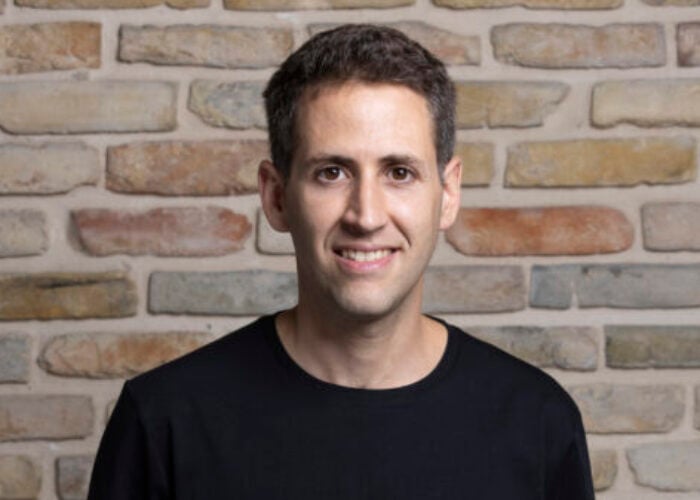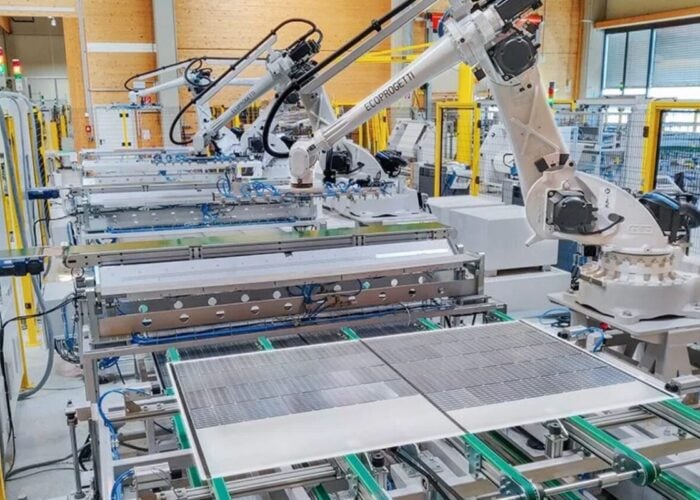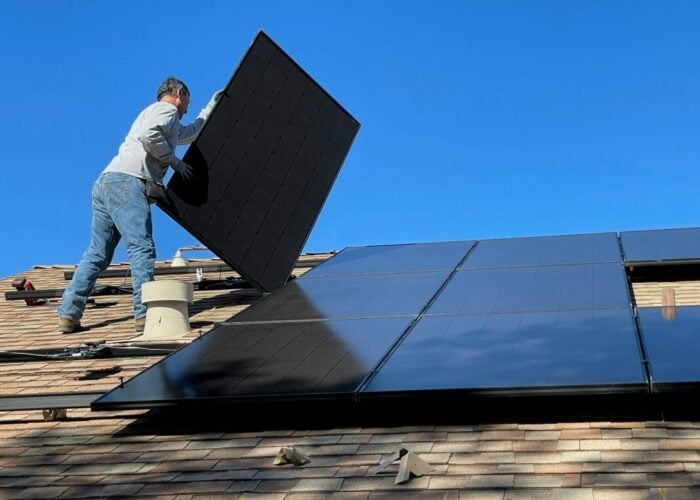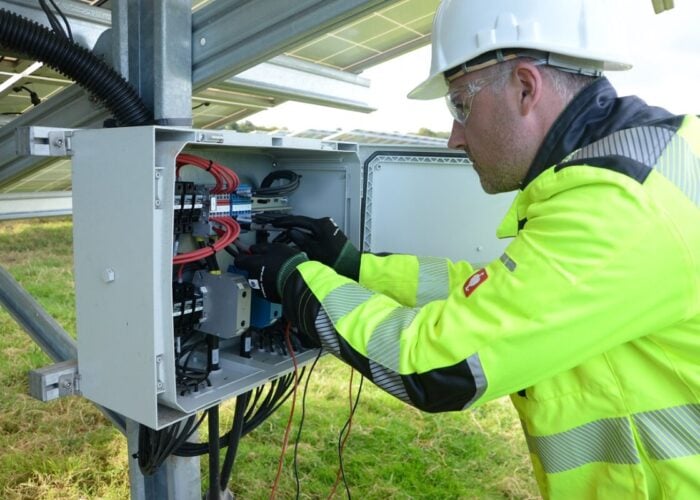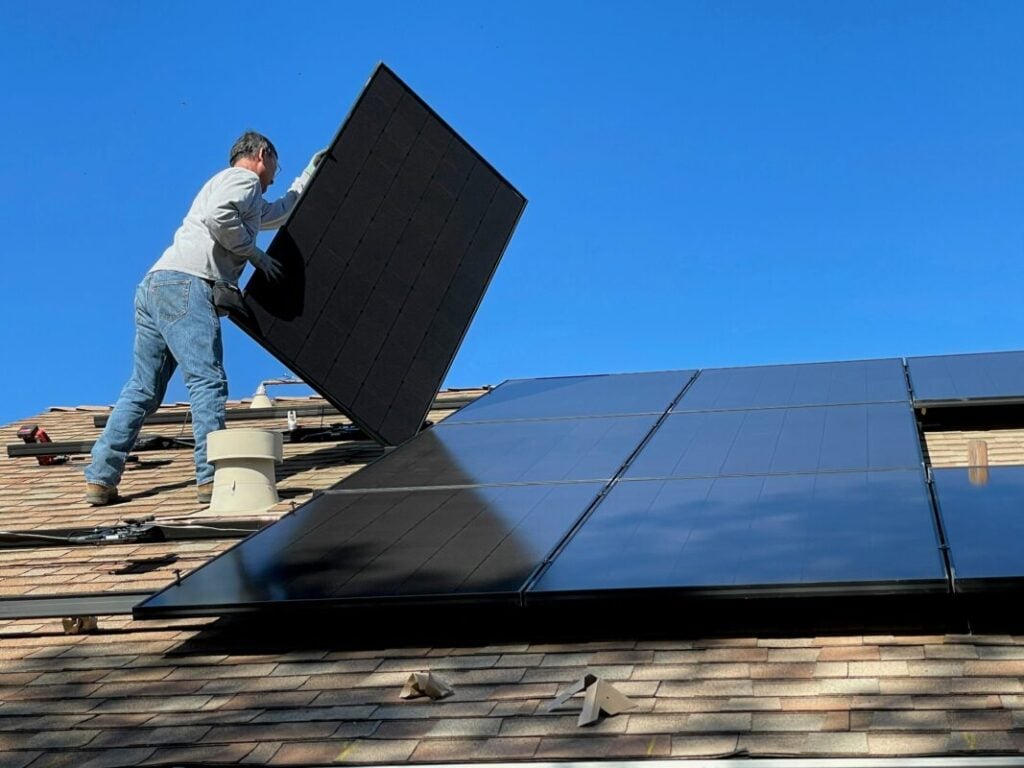
The European Solar Academy is getting to grips with its mission to equip Europe’s solar workforce with the necessary skills for a rapidly expanding sector. JP Casey reports on the academy’s initial steps as it approaches its first anniversary.
According to its most recent report into jobs in the European solar sector, trade body SolarPower Europe estimates that there were over 820,000 full-time equivalent positions in the industry as of the end of 2023. This was a 28% increase over the number of positions in 2022, outpacing SPE’s initial forecasts for 24% growth. According to SolarPower Europe’s analysts, this reflects both the growing appetite for solar power in Europe and a parallel need for new solar workers.
Try Premium for just $1
- Full premium access for the first month at only $1
- Converts to an annual rate after 30 days unless cancelled
- Cancel anytime during the trial period
Premium Benefits
- Expert industry analysis and interviews
- Digital access to PV Tech Power journal
- Exclusive event discounts
Or get the full Premium subscription right away
Or continue reading this article for free
“There will be a lot of solar PV installed,” Christophe Lits, a market analyst at SolarPower Europe, tells PV Tech Power. “The growth rate has decreased – in 2020 we installed about 40GW, in 2022-23 it was 58GW, now it’s a bit more than 60GW, and it will fluctuate a bit between 65-70GW – but the market is not expected to decrease, really.”
Even the relatively conservative year-onyear growth in capacity additions is impressive, with Europe adding 50% more new capacity in 2023 than it did in the previous year and pushing the continent’s cumulative operating PV capacity to 269GW. As a result, SolarPower Europe expects Europe to employ more than one million people as early as 2027, with its most optimistic forecasts suggesting Europe could have 1.4 million solar workers by 2028.
In response, last summer, EIT InnoEnergy launched the European Solar Academy, one of the Net-Zero Academies implemented by the European Commission (EC). The academy aims to deliver better training and reskilling programmes for European solar employees and help standardise qualification and certification practices across the continent.
The academy is approaching its one-year anniversary and aims to train 65,000 workers by the middle of 2026. Its emphasis has been on standardisation, collaboration and agility in the fluctuating European solar sector.
Beyond installation jobs
While SolarPower Europe expects the installation sector’s dominance of European solar jobs to decline slightly in the coming years – forecasting its contribution of total European jobs to fall from 87% in 2023 to 79% by 2028 – deployment is likely to remain the largest part of the industry, and this is where EIT InnoEnergy is directing its focus.
“Installation remains a key area of demand in the European solar industry,” Jacqui Wigg and Oana Penu tell PV Tech Power. Wigg and Penu, respectively the solar learning project manager at EIT InnoEnergy and director of the InnoEnergy Skills Institute, note that not all installation jobs are one and the same.
“It’s important to differentiate between rooftop and utility-scale installations,” they explain. “While utility scale projects are expanding rapidly, the rooftop sector remains the largest employer due to its labour-intensive nature.”
This is reflected in some of Europe’s largest solar industries, with SolarPower Europe figures showing that in Germany, Italy and France there are around double the number of positions in rooftop installations than utility-scale ones. Indeed, just over 31% of the EU’s total jobs are in the utility-scale sector, with the rest in rooftop deployments.
Lits says of the greater numbers of rooftop installers: “It makes sense at the moment because we have a growing market, and in the future, we will still need those jobs because the product by itself lasts for 30, 35 years, and you always have something to replace or maintain. But [installers] will probably be less needed.”
Wigg and Penu describe Europe’s solar jobs landscape as “dynamic and in high demand”. Macroeconomic headwinds have cooled the appetite for new solar deployments as a whole but also changed perceptions of different scales of solar projects.
“We expect growth to rebound in the next year or two, driven by technological innovation, strong policy support from national governments and the EU, and the ongoing energy transition,” they say.
“It’s important to differentiate within the market: residential rooftop installations have slowed, partly due to lower electricity prices reducing urgency for homeowners. However, commercial and industrial rooftop projects are growing rapidly as businesses invest in energy independence.”
They also suggest that, as Europe looks to deliver greater energy independence by investing in its manufacturing space, there will be a greater demand for jobs in upstream production.
“Reshoring efforts in solar manufacturing are likely to create new job opportunities,” Wigg and Penu say. “Beyond installation, critical skill areas include manufacturing and operations & maintenance (O&M).”
Delivering consistent credentials
Now, just over a year into the work of the European Skills Academy, Wigg and Penu say that most of its work has focused on “laying strong foundations” for the initiative.
“We have identified critical job roles across the solar value chain and developed a comprehensive skills framework aligned to these roles, as outlined in a recent report,” they say. “This ensures our training is relevant to industry needs while supporting workforce mobility across Europe.
“We’ve also established an advisory council with representatives from SolarPower Europe, the Association of European Renewable Energy Research Centers (EUREC), the European Semiconductor Industry Association (ESIA), European Solar Manufacturing Council (ESMC) and the European Commission, providing strategic guidance and reinforcing industry alignment.”
This range of stakeholders could be significant, as Lits suggests that hiring and training all of the people required to meet Europe’s solar goals will need different commitments from different organisations and actors.
“I think it’s mostly the job of the sector as a whole to organise those trainings … usually large installation companies have their own training programmes, from which they hire and employ,” says Lits. “There’s [also] the political job, which is not to create those jobs, but to make them valid wherever you go, and in whatever country you’re moving to.”
“I don’t think it’s the role of the Commission to create those training programmes, but maybe the Commission’s role is to simplify the administrative procedure … making the certifications that you get in Germany work in Spain also, that sort of thing.”
The skills academy team also highlights the importance of standardising qualifications across Europe, which will help deliver consistent standards across a range of countries and jurisdictions on the continent.
“A flagship project is our collaboration with SolarPower Europe to develop a credential for solar installers – addressing a pivotal role in scaling deployment,” they say. “This credential will serve as a clear benchmark of competence, providing confidence to both trainees and employers.
“Greater harmonisation across Europe would bring significant benefits to the solar industry, and this is a core objective of the European Solar Academy.”
Reskilling and retraining
Wigg and Penu also describe reskilling and retraining – the hiring of workers with skills in adjacent industries with the idea that some of their expertise will transfer to the solar sector – as a key component of the European Skills Academy’s work.
“We anticipate both,” they say. “Workers transitioning from other energy sectors and individuals entering the solar industry for the first time. We’re partnering with a new solar manufacturing company in France to reskill individuals from other manufacturing sectors. While they bring transferable skills, they’ll need to acquire solar-specific competencies to reach the required level of productivity.”
However, Lits is less optimistic about putting such an emphasis on hiring workers with experience in other industries, suggesting that there may not be many directly transferrable skills useful for the solar sector and the rooftop installation component in particular.
“From a personal point of view, I don’t really know if it’s possible, but I’ll be really curious to investigate a little bit more,” he says, saying that there may be more synergies between other aspects of the energy industry, such as retraining offshore oil rig workers to work on floating wind farms.
Lits notes, however, that he is not ready to dismiss the idea, describing it as “a question I’d like to investigate” in SolarPower Europe’s next jobs report, which will cover European solar employment in 2024.
Forecast for an ‘evolving’ industry
Wigg, Penu and Lits all say that looking ahead, training and hiring practices in European solar are likely to change as the industry evolves. When asked about the future of the practice in Europe, Wigg and Penu say they are already paying particular attention to manufacturing qualifications as Europe looks to solidify its supply chains.
“In line with Europe’s ambition to reshore solar PV manufacturing, we’ve placed strong emphasis on manufacturing job roles,” say Wigg and Penu. “We’ve partnered with local organisations in France to establish a training unit supporting major new manufacturing projects to secure the needed talent timely and at the right level of productivity to meet their business objectives.”
This emphasis on agility is important as, according to Lits, recent fluctuations in power prices and demand for new solar products have left companies whose workforces expanded rapidly in the boom times somewhat exposed as demand has ebbed.
“The energy crisis [created] a lot of need for solar PV, so a lot of solar PV companies expanded their workforces and hired a lot of people,” Lits explains. “Then when the energy price went back to normal, a lot of people didn’t see installing PV [as so] urgent, so the demand for PV decreased just after those companies had increased their workforces.
“We’ve seen a lot of companies – not just in deployment as mentioned but in manufacturing – hire not too many people,” he adds, suggesting that, as with all aspects of the global solar supply chain, hiring and training will need to respond to these macroeconomic conditions.
“A dynamic, scalable approach is central to our mission,” agree Wigg and Penu. “This translates to maintaining strong industry engagement, regularly updating our skills framework to reflect emerging trends and creating new partnerships across the solar ecosystem.”

